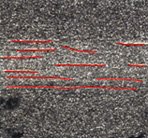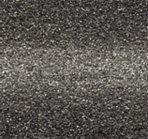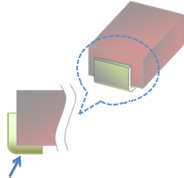KANZACC Composite Plating Suitable for Lead Frames for Semiconductor Equipment and/or Electronic Components is Developed
KANZACC Co., Ltd. (Head office: Osaka City, President: Hisakazu Ishibashi) of the Furukawa Electric Group (hereinafter referred to as "our company") has developed composite plating with good heat resistance and good crack resistance as well. It is suitable for plating lead frames for semiconductor equipment and/or electronic components.
Semiconductor equipment and/or electronic components are created by covering each component on the lead frame with epoxy resin, etc. Especially, for the surface implementation type, the tip of the lead frame is bent in an L shape to make it easy to solder it to the circuit board. Also, the lead frame material is iron and/or copper alloy, and it is not possible to solder it as it is. Therefore, we plate it with tin and/or tin alloy (hereinafter referred to as "tin (alloy) plating"). In this case, it is a common practice to plate it with tin (alloy) after plating the substrate on the lead frame.
However, there is a problem where the substrate and tin (alloy) film diffuse due to heat treatment that is conducted to completely harden the exterior epoxy resin of the semiconductor equipment and/or electronic component; a problem where the tin (alloy) film decreases in thickness; and a problem where a crack occurs from the substrate when bending the lead frame in an L shape. Any of these problems would cause a poor connection when soldering semiconductor equipment and/or electronic components to the circuit board.
The composite plating developed by our company is a composite type with tin (alloy) plating and optimal substrate plating combined, and it is an excellent plating film without any cracks generated by bending while keeping heat resistance.
We aim to put this composite plating to practical use in the second half of 2014, and sales for fiscal 2015 are expected to be 200 million yen.
Features
- Since there is no diffusion reaction between the tin (alloy) film and the substrate due to heat treatment, there is no decrease in the tin (alloy) plating film's thickness, and good soldering characteristics are maintained.
- No crack occurs in the portion of the lead frame, which is bent in an L shape, after tin (alloy) plating, maintaining good soldering characteristics.
Structure
Composite plating to the lead frame (material) Composite plating <Substrate plating / tin (alloy) plating>
Purpose of use
Plating a lead frame of a semiconductor and/or an electronic component










 Share
Share Tweet
Tweet Share
Share